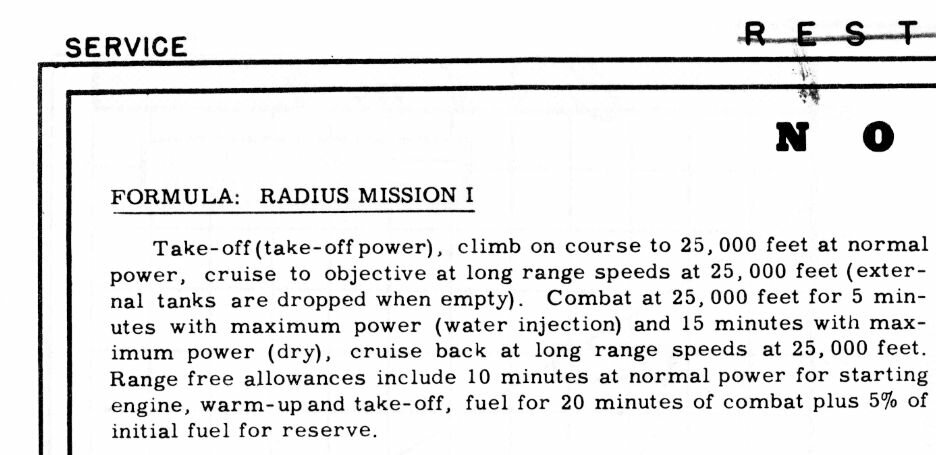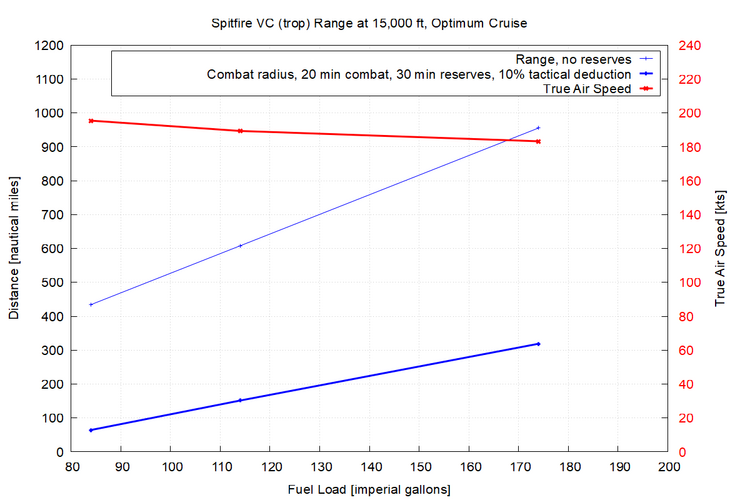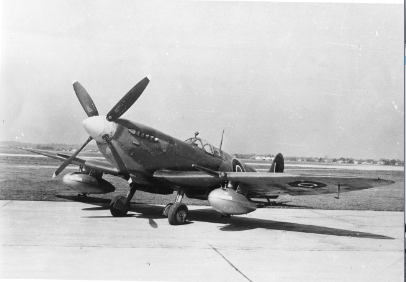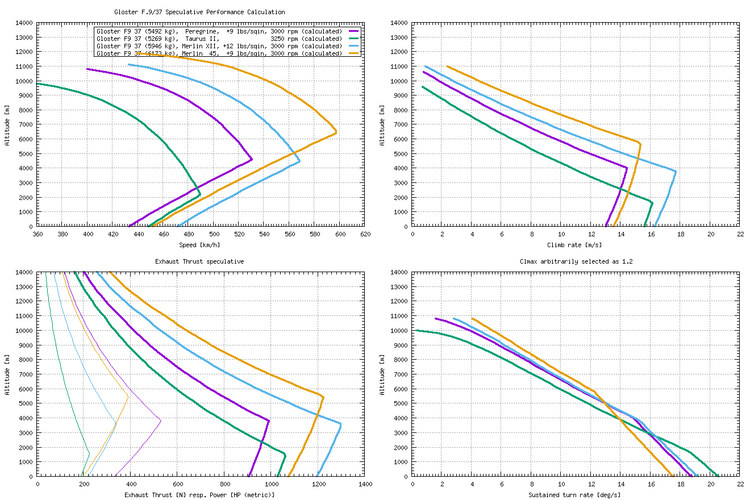Hi,
https://www.aerosociety.com/news/escort-spitfire-a-missed-opportunity-for-longer-reach/
Paul did an article on this a little while ago. He got to a notional 286g internal + 124/180g external. So possible to massively increase radius. But this obviously needs to be worked into a proper variant with sufficient strengthening etc. and priority for doing this
Hm, I have to admit that I'm not familiar with the name Paul Stoddard. Is he active on this forum?
I find his article slightly confusing as the tables sometimes contain more numbers than the headlines advertise, and I made some attempts to reverse-calculate his numbers which made me think maybe he gave the Mustang a 10 gallon reserve in one case, but not the Spitfire in the same case.
I was also distracted by the comment on both the Spitfire and Mustang "being more economical when carrying drag inducing external tanks than when flying clean". While he goes on to explain that as paradoxical, I'd like to point out that he needlessly created that paradox himself when he decided just to divide nominal range by total fuel capacity and call that "air miles per gallon". Of course that's going to give a wrong impression ... don't do it in the first place, then you don't need to debug that number.
With reard to the total tankage of the Spitfire ... well, considering the escort mission to Berlin, realistically the Spitfire will have to drop its external tanks over Berlin, and then be able to fight unrestrictedly for the allocated time, and still have enough fuel to return to Britain with a sensible reserve. If the rear tanks can't be used in combat because they give the Spitfire a rearward centre of gravity position, they're not available for combat and the return flight. I'm also not convinced that the leading edge tank is viable for combat operations. As a protected tank, it would have a fairly poor weight-to-volume ratio because the walls of the self-sealing tanks were heavy and took up a fair bit of volume themselves, and the ratio of tank wall mass to fuel content mass was not very good for thin elongated tanks. As an uprotected tank, it would probably not available for combat and the return flight either. (The Vought F4U-1 Corsair had unprotected long range tanks in the wings, but these were eliminated in the F4U-1D. I'd guess the reason was that they were more of a liability than an asset.) Oh, and of course you have to be competitive in air combat, and as the Spitfire lacks the speed of the P-51D and is not quite its usual nimble self when weighed down with all that extra fuel, that might be a bit of an extra challenge.
(There's a mention that the Spitfire was stable with 35 gallons used up from the rear fuel tank, but it's not linked to any definite rear tank volume as far as I can tell, and with the very light stick force per G values the Spitfire has, I'm not even sure one would want to fight in a Spitfire that's merely "stable" ... perhaps that's good enough for cruising, but when pulling Gs, predictable and reasonable stick forces would be highly desirable if you want to keep attrition down.)
I also wonder how the Spitfire's take-off performance would be when loaded with all that fuel. Unlike the P-51, it doesn't have camber-changing flaps, but rather simple split flaps that create a log of drag when deployed. Great for landing, not so great when taking off with a heavy load. The RAF throughout the life of the Spitfire always seem to have been somewhat worried about the question of take-off distances ... I always though this a bit exaggerated as the type has fairly good performance, but now we're talking about routine operations at 9,856 lbs take-off weight when the Spitfire IX Pilot's Notes give a maximum of 8,700 lbs with the precautionary notes, "for take-off and gentle manoeuvres only" and "at this weight, take-off must only be made from a smooth hard runway".
Not that I would automatically discount the Spitfire as a long-range escort aircraft in the 1942-45 period specified in the initial post of this thread, but I'm not sure one would get there simply by combining the features some historical Spitfires used anyway. In my opinion, if you need a long-range Spitfire in 1942, you better start designing a purpose-built variant in 1939, but you'll be competing for production capacity with all the interim marks that were historically produced in the original timeline, plus the "definitive" Spitfire VIII which is a bit of an extended-range version itself. For the 1939-41 period, I'd still suggest a Whirlwind/Fw 187 crossover.
Regards,
Henning (HoHun)




